These are some Sid examples which i have recorded from a Commodore 64 with the SwinSID installed. You can Download the original Sid track in .sid file format and the SwinSID in .ogg file format (High Quality), so you can compare the musics.
- The Alibi by Thomas E. Petersen (Laxity) 1989 Maniacs of Noise- SID (6581)
- The Alibi by Thomas E. Petersen (Laxity) 1989 Maniacs of Noise- SWINSID
- Albino Human by Alexander Rotzsch (Fanta) 2006 Fanta – SID (8580)
- Albino Human by Alexander Rotzsch (Fanta) 2006 Fanta – SWINSID
Some Sid tracks play perfectly others need some emulation fixes.
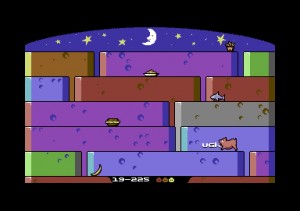 Saimo (Simone Bevilacqua) has updated his game Quod Init Exit, which is Latin for “whatever gets in, gets out”.
Saimo (Simone Bevilacqua) has updated his game Quod Init Exit, which is Latin for “whatever gets in, gets out”.
In the game you are a little pig, and you need to eat all the food you can find. The game has excellent HIRES graphics and is fun to play.
Changelog:
- Fixed the flicker of some pixels, which was visible only on real machines and accurate emulators.
- Added level part to score shown in in-game screen (courtesy of Endurion’s feedback Wink)
- Compressed the program for faster loading.
- Made various other minor changes.
source: noname.c64.org
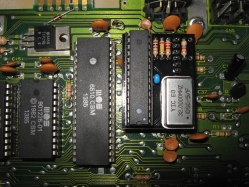
Micro SwinSID KIT by Peter Sieg:
Certainly you can’t expect perfect emulation, but we are very close, the audio is much more clean than the original SID chip, if the project continues on this road we will arrive very soon on the perfect emulation.
Micro SwinSID (SwinSID88) is a hardware replacement for legendary SID sound chip which was placed in every Commodore C64 computer.
This project is based on the microcontroller ATMEGA88PU from Atmel and the emulation code is written by Swinkels. The first version of the pcb (prototype) was made by Crisp.
For more information and price visit the forum64.de.
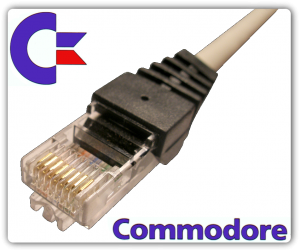 The CodeNet Client it can be used to transfer PRG files directly into the memory of the C64 and also allows some other actions like filling memory and ofcourse starting a program with RUN or a jump to a defined memory address.
The CodeNet Client it can be used to transfer PRG files directly into the memory of the C64 and also allows some other actions like filling memory and ofcourse starting a program with RUN or a jump to a defined memory address.
The CodeNet protocol is a very simple protocol to send data and executables to a C64 computer via ethernet. A CodeNet server is normally listening on UDP port 6462.
Changelog:
v0.3 (6.11.10):
- Added: Better network error handling.
source: oxyron.de
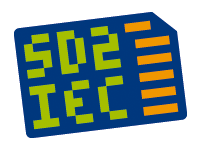 SD2IEC is a hardware mass storage device using an SD/MMC card and interfacing with the IEC bus. It is based on the ATmega644 or ATmega1284p microcontroller from the Atmel AVR microcontroller family.
SD2IEC is a hardware mass storage device using an SD/MMC card and interfacing with the IEC bus. It is based on the ATmega644 or ATmega1284p microcontroller from the Atmel AVR microcontroller family.
The most prominent use of SD2IEC is emulation/replacement of a Commodore-1541 disk drive for a C64. Hardware and the microcontroller’s firmware is available as open source (GPL).
Changelog:
2010-11-07 – release 0.10.0
- Deprecation notice: E-R and E-W commands will be removed in the next release.
- Improved reliability of Nippon loader.
source: sd2iec.de gitweb forum thread c64-wiki
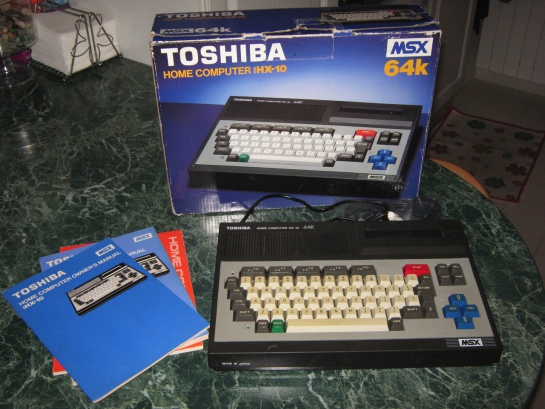
Autopsy:
from Wikipedia:
MSX was the name of a standardized home computer architecture in the 1980s conceived by Kazuhiko Nishi, then Vice-president at Microsoft Japan and Director at ASCII Corporation.
On 27 June 1983, the date considered the birthday of the MSX standard, the MSX was formally announced during a press-conference, and a slew of big Japanese firms declared their plans to introduce machines. The Japanese companies avoided the intensely competitive US home computer market, which was in the throes of a Commodore-led price war.
Only Spectravideo and Yamaha briefly marketed MSX machines in the US. Spectravideo’s MSX enjoyed very little success, and Yamaha’s CX5M model, built to interface with various types of MIDI equipment, was billed more as a digital music tool than a standard personal computer.
source: wikipedia
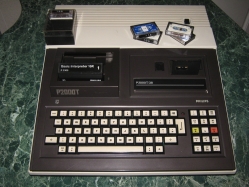
Autopsy:
from Wikipedia:
The Philips P2000T home computer was Philips’ first real entry in the home computer market, after the Philips Videopac G7000 game system (better known in the U.S. as the Magnavox Odyssey2) which they already sold to compete with the Atari 2600 and similar game systems.
There was also an P2000M version with an additional 80-column card for use with a monochrome monitor. This version shipped with a monitor cabinet also housing a dual 5.25″ floppy drive. Basically the P2000T was a Z80 based home computer that used a Teletext display chip to produce the video picture and a small Mini Cassette recorder for mass storage (42 kByte).
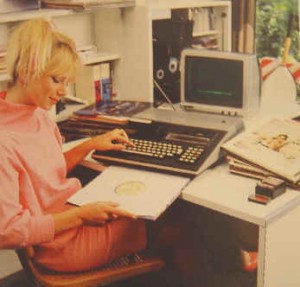 The mini cassette was seen as a floppy drive from the user perspective using the automatic search for a program (CLOAD command) or free space (CSAVE). A command to display the directory of the cassette does also exist. Philips used components they already produced for other markets (television sets and dictation machines) to quickly design a small computer system. It was partially designed by Austrian professor Dieter Hammer.
The mini cassette was seen as a floppy drive from the user perspective using the automatic search for a program (CLOAD command) or free space (CSAVE). A command to display the directory of the cassette does also exist. Philips used components they already produced for other markets (television sets and dictation machines) to quickly design a small computer system. It was partially designed by Austrian professor Dieter Hammer.
They also copied the ROM cartridge system from their Videopac G7000 game system. One of these cartridges contained Microsoft BASIC. It was also possible to use cassette tape floppys.
source: wikipedia
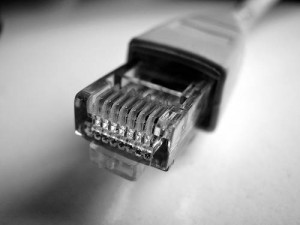 from Dreamhost Status blog:
from Dreamhost Status blog:
We will be completing the fixes to our Core infrastructure. This will include abandoning HSRP, restructuring our internal LAN routing domain and pruning unnecessary vlans from our border routers.
Only One Word Comes to Mind: Dreamhost sucks cocks big time!
source: dreamhoststatus.com
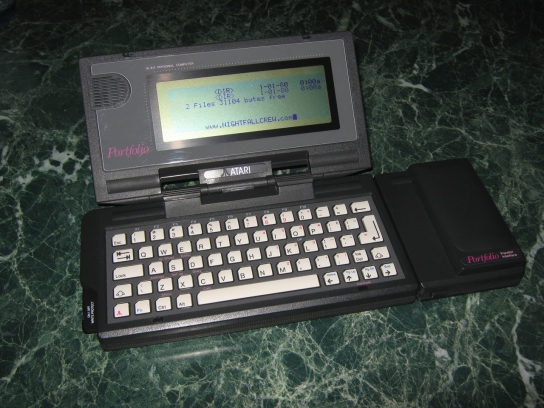
Autopsy:
from Wikipedia:
The Atari Portfolio is the first PC-compatible palmtop computer, and was released by Atari Corporation in 1989. The Portfolio was licenced from Distributed Information Processing (DIP) based in Guildford, Surrey, England. The original founding member of DIP was Ian Cullimore, fresh from his experiences at helping design the early Organiser products at Psion.
DIP officially stood for “Distributed Information Processing”, although secretly it actually stood for “David, Ian and Peter”, the three founding members of the company, all ex-Psion. The original founder of the company (first called “Crushproof Software”) was Ian Cullimore, and the other two David Frodsham and Peter Baldwin. It was built around an Intel 80C88 CPU running at 4.9152 MHz and ran a variant of MS-DOS called “DIP DOS 2.11″. It had 128 kB of RAM and 256 kB of ROM which contained the OS and built-in applications. The on-board RAM had to be divided between system memory and local storage (the C: drive). The LCD was monochrome without backlight and had 240×64 pixels or 40 characters x 8 lines.
source: wikipedia
Commodore yellowed spare parts:
- 1 x Commodore 64C (Motherboard ASSY 250407)
- 1 x Commodore 1541 II (Floppy Drive Chinon)
- 1 x Commodore Mouse 1351.
This is a rare SIO Adapter cable. You can use it for connect the Atari 1010 Program Recorder on Commodore 64/128.
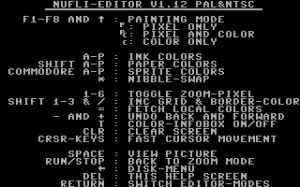 A new update of the NUFLI Editor is out.
A new update of the NUFLI Editor is out.
With this editor (PAL/NTSC) you can edit NUFLI (static) image directly with your Commodore 64.
source: noname.c64.org
This is a automatic generator for DATA loaders written by Mike for VIC-20.
source: Denial (The Commodore VIC-20 forum)
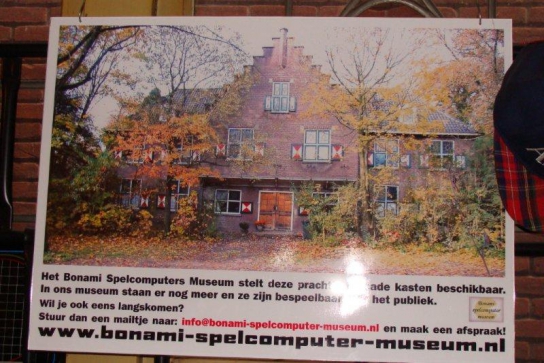
Bonami Museum:
This is one of the biggests museum of retro-computers and consoles in North Europe, it’s located at EPE in the eastern Netherlands.
Many thanks for the photos to Gerben Vissers a friend of mine, Gerben is also a retro-computers collectors (like me) with a site online: www.computerverzameling.nl
source: bonami-spelcomputer-museum.nl
 SD2IEC is a hardware mass storage device using an SD/MMC card and interfacing with the IEC bus. It is based on the ATmega644 or ATmega1284p microcontroller from the Atmel AVR microcontroller family.
SD2IEC is a hardware mass storage device using an SD/MMC card and interfacing with the IEC bus. It is based on the ATmega644 or ATmega1284p microcontroller from the Atmel AVR microcontroller family.
The most prominent use of SD2IEC is emulation/replacement of a Commodore-1541 disk drive for a C64. Hardware and the microcontroller’s firmware is available as open source (GPL).
Changelog:
2010-10-31 – release 0.10.0pre5
- Bugfix: Avoid duplicate file name when DEL/DIR matches.
- Bugfix: Reduce chance of data corruption in Wheels.
- Bugfix: Slightly relax IEC timing while waiting for command.
- Added AR6 1581 fastloader+saver (PAL).
source: sd2iec.de gitweb forum thread c64-wiki
 Saimo (Simone Bevilacqua) has updated his game Quod Init Exit, which is Latin for “whatever gets in, gets out”.
Saimo (Simone Bevilacqua) has updated his game Quod Init Exit, which is Latin for “whatever gets in, gets out”.












 The CodeNet Client it can be used to transfer PRG files directly into the memory of the C64 and also allows some other actions like filling memory and ofcourse starting a program with RUN or a jump to a defined memory address.
The CodeNet Client it can be used to transfer PRG files directly into the memory of the C64 and also allows some other actions like filling memory and ofcourse starting a program with RUN or a jump to a defined memory address.
































 The mini cassette was seen as a floppy drive from the user perspective using the automatic search for a program (CLOAD command) or free space (CSAVE). A command to display the directory of the cassette does also exist. Philips used components they already produced for other markets (television sets and dictation machines) to quickly design a small computer system. It was partially designed by Austrian professor Dieter Hammer.
The mini cassette was seen as a floppy drive from the user perspective using the automatic search for a program (CLOAD command) or free space (CSAVE). A command to display the directory of the cassette does also exist. Philips used components they already produced for other markets (television sets and dictation machines) to quickly design a small computer system. It was partially designed by Austrian professor Dieter Hammer. from Dreamhost Status blog:
from Dreamhost Status blog:





















 A new update of the NUFLI Editor is out.
A new update of the NUFLI Editor is out.


















Recent Comments